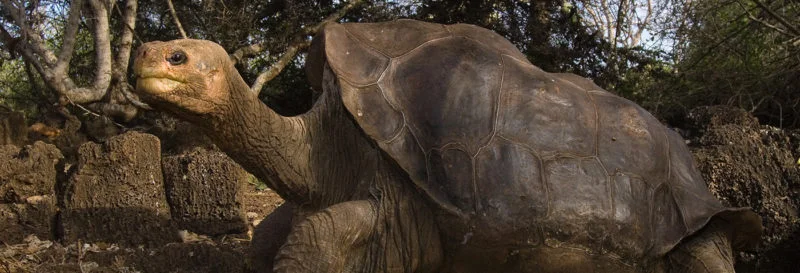
2 New (And Unfortunate) Contenders For The ‘Rarest-Creature-On-Earth’ Title | Travel News
The Pinta Island tortoise was a massive reptile that once thrived on Pinta Island in the Galápagos archipelago. Like its relatives throughout the Galápagos, it evolved through island gigantism. These tortoises could reach over 5 feet in length and weigh up to 500 pounds, dominating their ecosystem with their immense size and slow, steady presence.
While other Galápagos tortoise subspecies continue to survive, the death of the last Pinta Island tortoise, “Lonesome George,” marked the end of this species. George, born around the early 20th century, was discovered in 1971.
In the mid-20th century, goats were introduced to Pinta Island and quickly became an invasive species. They devastated the island’s vegetation, depleting the tortoises’ primary food sources and severely disrupting their habitat. Combined with earlier hunting pressures by sailors in the 19th century, who sought the tortoises for fresh meat during long voyages, this led to a sharp decline in the Pinta Island tortoise population.
Despite conservationists' efforts to find a mate, George remained alone until his death in 2012. Though the Pinta Island tortoise is now extinct, a faint hope lingered when individuals with partial Pinta Island tortoise ancestry were discovered on Isabela Island, as reported in a 2013 update in Biological Conservation.
There were hopes that these genetic links could lead to species recovery, but over a decade later, the Pinta Island tortoise remains extinct.
Today, two species stand on the brink of extinction, sharing the title that once belonged to George.
1. The Northern White Rhinoceros—Only Two Females Remain, No Males
Once a symbol of strength and resilience in Central Africa, the northern white rhinoceros now faces extinction, driven by relentless poaching and habitat loss. The ivory from their horns made them prime targets for poachers, leading to a drastic decline in their numbers. Today, only two northern white rhinos remain—both females, Najin and Fatu—under constant protection at the Ol Pejeta Conservancy in Kenya.
With no surviving males, the northern white rhinoceros is functionally extinct, meaning natural population recovery is impossible. Conservationists are exploring reproductive technologies, including IVF, but the chances of saving the subspecies appear bleak.
2. The Vaquita Porpoise—The World’s Rarest Marine Mammal
The vaquita porpoise, native to the northern Gulf of California, is now the world’s rarest cetacean. Measuring just 4 to 5 feet in length, fewer than 10 individuals remain in the wild. The species has suffered due to bycatch from illegal gillnets used to fish for the totoaba, whose swim bladder is highly valued in traditional Chinese medicine.
Efforts to protect the vaquita and its habitat, including bans on gillnets, have met with limited success, and the species remains at critical risk of extinction.
Just as the world mourned the loss of Lonesome George, we now face a similar crisis with these two species teetering on the edge of extinction. Their survival is a sobering reminder of the consequences of human actions, and the question remains whether decisive steps will be taken before these irreplaceable species are lost forever.

